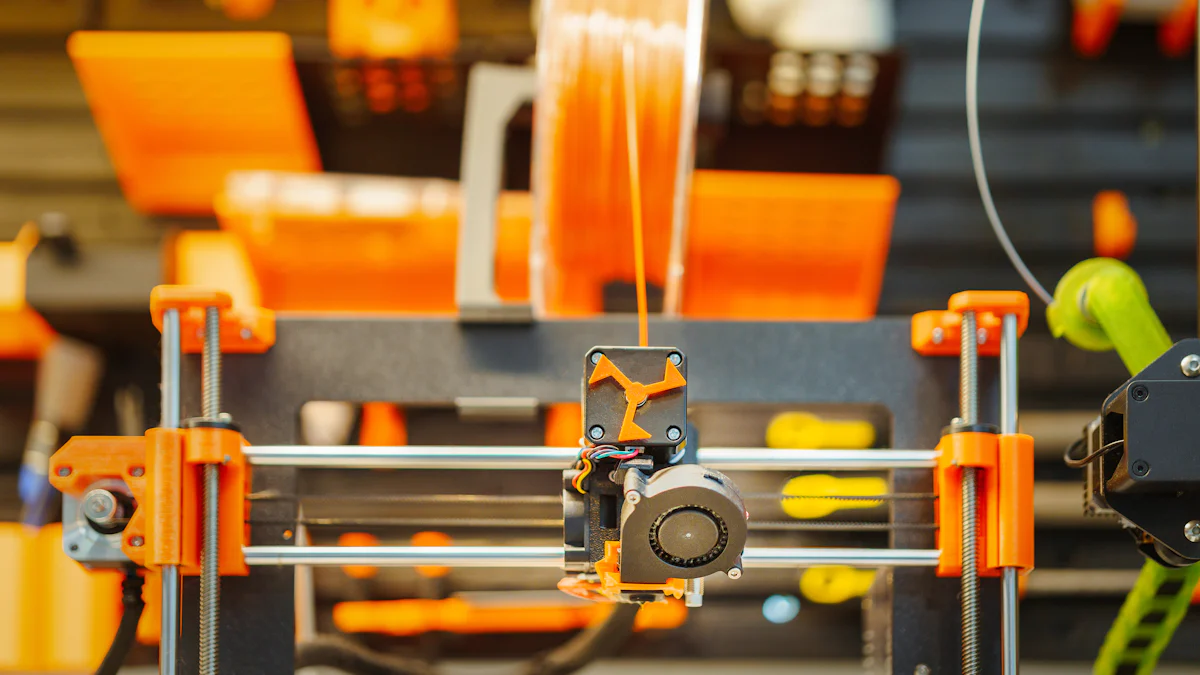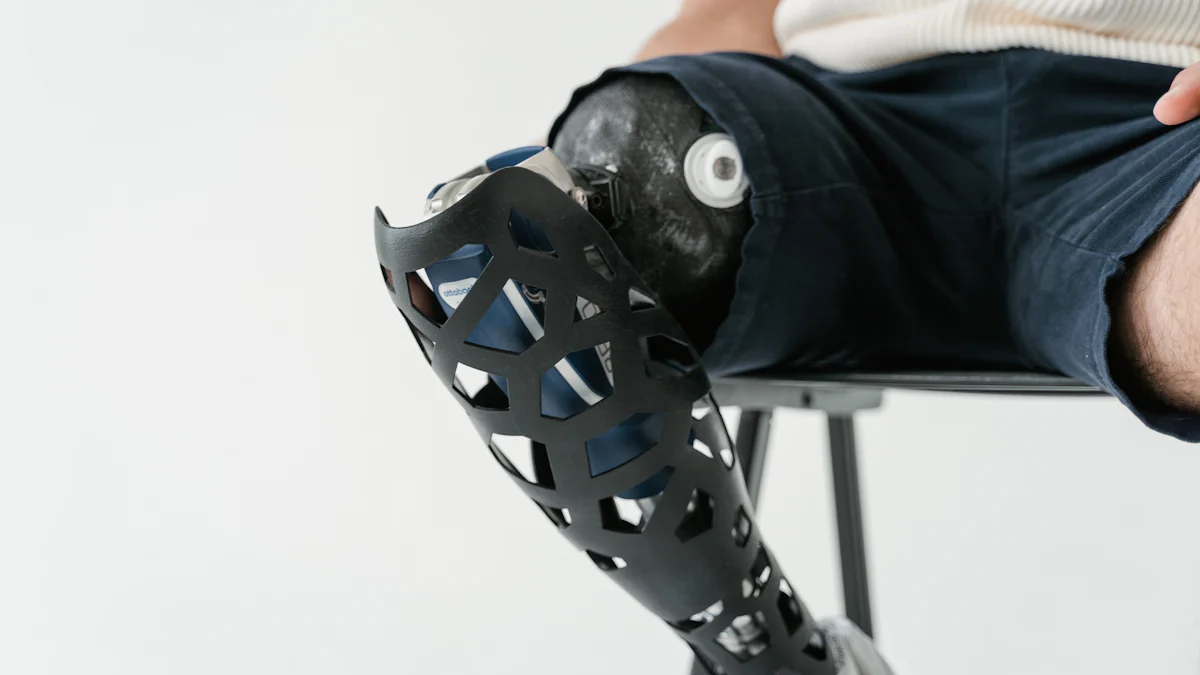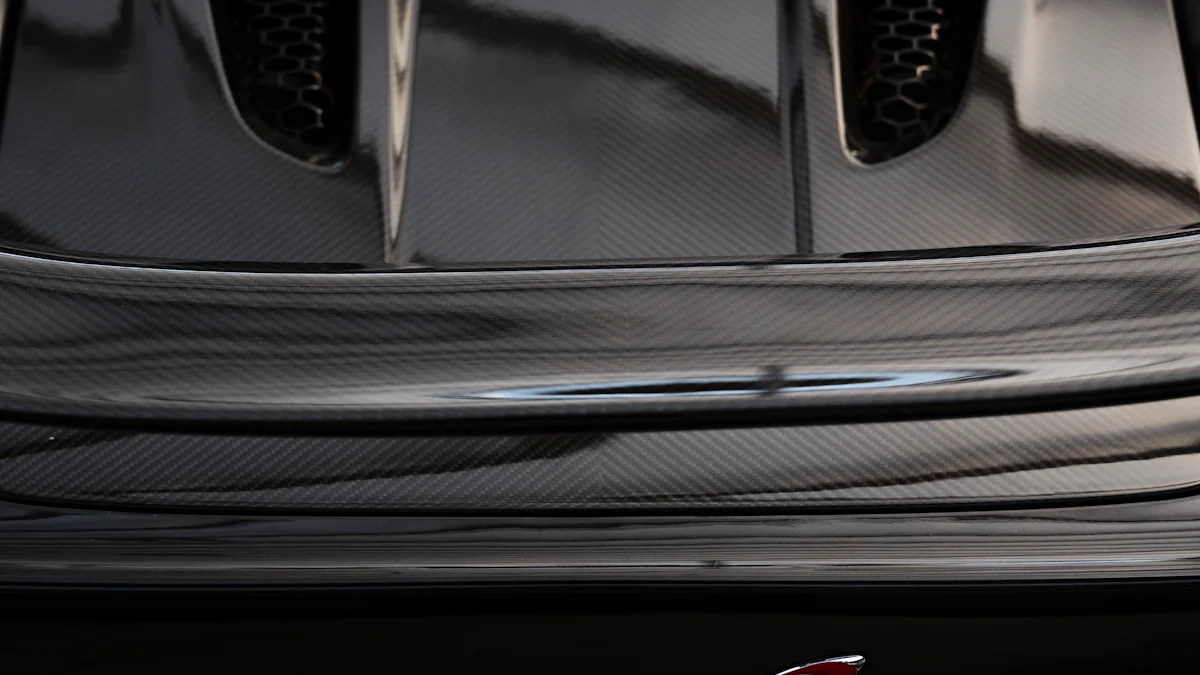
Les plaques carbone en fibre de carbone sont des matériaux avancés connus pour leur résistance exceptionnelle, leur légèreté et leur polyvalence. Vous les trouverez nettement plus légers que les métaux comme l'aluminium ou l'acier, mais ils offrent une résistance supérieure à la traction et la rigidité. Contrairement aux métaux, ils résistent à la corrosion et maintiennent leur stabilité sous des changements de température. Ces propriétés les rendent indispensables dans toutes les industries. De l'aérospatiale aux soins de santé, les applications composites carbone démontrer leur potentiel de transformation. Si vous vous êtes jamais demandé qu'est-ce que les composites carbone, les considérer comme des matériaux qui allient durabilité et précision, assurant des performances à long terme dans des environnements exigeants.
Principaux enseignements
- Les plaques carbone en fibre de carbone sont nettement plus légères que les métaux comme l'aluminium et l'acier, offrant une high strength-to-weight ratio qui améliore l'efficacité énergétique et les performances dans les applications aérospatiales et automobiles.
- Ces plaques excellent dans des conditions extrêmes, fournissant résistance à la chaleur exceptionnelle et la résistance à la corrosion, les rendant idéales pour les composants spatiaux et les pièces automobiles de longue durée.
- Dans le domaine médical, les plaques carbone améliorent les instruments chirurgicaux et les implants en étant légers, biocompatibles et radiolucides, ce qui permet d'obtenir de meilleurs résultats pour les patients et de réduire les coûts à long terme.
Applications aérospatiales des plaques de carbone en fibre de carbone

Structures d'aéronefs légers
Dans l'aérospatiale, la réduction du poids est essentielle pour améliorer l'efficacité énergétique et les performances. Les plaques carbone jouent un rôle central dans la réalisation de cet objectif. Ces plaques offrent un rapport résistance-poids élevé, ce qui les rend idéales pour construire des structures d'aéronefs légères mais durables. Par rapport aux matériaux traditionnels, ils réduisent la masse globale des aéronefs jusqu'à 30% sans compromettre les normes de sécurité.
| Bénéfice | Fibre de carbone | Traditional Materials |
|---|---|---|
| Rapport force/poids | Haut | Modéré |
| Résistance à la fatigue | Excellent | Bonne |
| Facilité d'entretien | Plus facile | Plus difficile |
| Potentiel de réduction du poids | Jusqu'à 30% dans l'aérospatiale | Lower |
Vous trouverez des plaques carbone en fibre de carbone utilisées dans différents composants d'aéronef. Il s'agit notamment de panneaux de fuselage, d'ailes et de sections de queue. Même les outils utilisés dans la production d'avions bénéficient de ces matériaux, devenant jusqu'à 75% briquet. Cette réduction de poids améliore la manipulation et l'efficacité pendant la fabrication.
Composants des engins spatiaux résistant à la chaleur
Les engins spatiaux font face à des températures extrêmes pendant le lancement et la rentrée. Les plaques carbone en fibre de carbone excellent dans ces conditions en raison de leur résistance à la chaleur exceptionnelle. Ils maintiennent l'intégrité structurelle sous une contrainte thermique intense, assurant la sécurité et la fonctionnalité des composants spatiaux.
Vous verrez ces plaques utilisées dans les boucliers thermiques, les systèmes de propulsion et les supports structuraux. Leur capacité à résister aux températures élevées tout en restant léger les rend indispensables à l'exploration spatiale. En intégrant ces matériaux, les ingénieurs peuvent concevoir des engins spatiaux à la fois efficaces et fiables, ouvrant la voie à des missions avancées.
Applications automobiles des plaques de carbone en fibre de carbone

Améliorer l ' efficacité et les performances des véhicules
Carbon fiber carbon plates ont révolutionné l'industrie automobile en améliorant l'efficacité et les performances des véhicules. Leur nature légère permet aux constructeurs de réduire le poids du véhicule jusqu'à 60%. Cette réduction de poids améliore directement le rendement énergétique, avec des études montrant des améliorations d'environ 25%. Les véhicules plus légers ont besoin de moins d'énergie pour fonctionner, ce qui les rend plus économiques et plus écologiques.
Le rapport résistance-poids élevé de ces plaques permet également des conceptions innovantes. Les ingénieurs peuvent créer des véhicules qui sont non seulement plus rapides mais aussi plus réactifs. Par exemple:
- Les composants en fibre de carbone améliorent l'aérodynamique en permettant des conceptions plus simples.
- La rigidité du matériau améliore la stabilité lors des manœuvres à grande vitesse.
En intégrant des plaques carbone, vous pouvez découvrir des véhicules qui allient efficacité et performances exceptionnelles.
Utilisation dans les véhicules électriques et à haute performance
Électrique et véhicules haute performance compter fortement sur des plaques de carbone pour obtenir des résultats supérieurs. Dans les véhicules électriques, ces plaques réduisent le poids global, ce qui réduit la consommation d'électricité et prolonge la durée de vie des batteries. Leur grande rigidité contribue également à la sécurité en absorbant l'énergie d'impact importante pendant les collisions.
De nombreux véhicules haute performance présentent la polyvalence de la fibre de carbone. Par exemple:
- BMW Les modèles M utilisent la fibre de carbone dans les toits et les structures visibles.
- La BMW La série 7 l'intègre dans les composants du corps.
- Les BMW i8 et i3 disposent d'une grande construction en fibre de carbone, avec l'i3 avec un corps de voiture entier fait de ce matériau.
Ces exemples soulignent comment les plaques carbone en fibre de carbone améliorent l'efficacité et la sécurité, les rendant indispensables dans la conception automobile moderne.
Applications médicales des plaques de carbone fibre de carbone
Instruments chirurgicaux et implants
Les plaques de carbone ont transformé le champ médical, en particulier dans les instruments chirurgicaux et les implants. Vous trouverez ces matériaux offrent des avantages uniques par rapport aux options traditionnelles comme le titane ou l'acier. Par exemple:
- Les plaques de polyéthérokétone (CFR-PEEK) renforcées de fibres de carbone sont légères et biocompatibles.
- Leur radiolucidité assure une image claire, essentielle pour le diagnostic et les soins postopératoires.
- Le module du CFR-PEEK est étroitement associé à celui de l'os cortical, réduisant le blindage du stress et optimisant la guérison des fractures.
- La résistance à la corrosion et la durabilité prolongent la durée de vie des dispositifs médicaux, réduisant ainsi les coûts à long terme.
Ces plaques sont largement utilisées dans les prothèses, les implants dentaires et les applications de cranioplastie. Les implants orthopédiques, comme les tiges, les vis et les plaques, bénéficient de la résistance et des propriétés légères de la fibre de carbone. Même les outils chirurgicaux comme les forceps et les rétracteurs deviennent plus faciles à manipuler en raison de leur poids réduit. La recherche montre que les implants à base de fibres de carbone fonctionnent aussi bien que les matériaux traditionnels, ce qui en fait un choix fiable pour la réparation et la stabilisation osseuses.
Équipement avancé d'imagerie
Les plaques carbone en fibre de carbone jouent également un rôle essentiel dans les équipements d'imagerie avancés. Leur nature radiolucide élimine les artefacts d'imagerie, vous fournissant des résultats diagnostiques plus clairs et plus précis. Cette caractéristique est particulièrement importante pour la surveillance des patients atteints d'implants, car les composants métalliques interfèrent souvent avec la qualité de l'imagerie.
De plus, les composites de fibre de carbone absorbent le rayonnement électromagnétique minimal, améliorant les performances des appareils à rayons X et à IRM. Cette propriété permet une meilleure imagerie près des implants métalliques, ce qui est souvent difficile avec d'autres matériaux. En incorporant des plaques de carbone, l'équipement d'imagerie médicale atteint une précision et une fiabilité plus élevées, améliorant ainsi les résultats des patients.
Sporting Goods and Consumer Applications
Équipement de sport de haute performance
Les plaques carbone ont révolutionné le monde du sport en améliorant les performances et la durabilité des équipements. Vous trouverez ces matériaux dans une large gamme d'équipements de sport haute performance, où leurs propriétés légères et fortes offrent un avantage compétitif.
- Les chaussures athlétiques, telles que les chaussures Nike.Air Zoom AlphaFly NEXT% et New Balance FuelCell, incorporent des plaques en fibre de carbone pour améliorer le rendement énergétique et la vitesse.
- Les bicyclettes haut de gamme bénéficient de cadres en fibre de carbone, qui réduisent le poids tout en maintenant la force, les rendant idéales pour le cyclisme compétitif.
- Les arbres de club de golf en fibre de carbone offrent un meilleur contrôle oscillant et un transfert de puissance.
- Les raquettes de tennis et les bâtons de hockey fabriqués à partir de fibre de carbone assurent une précision et une durabilité supérieures.
- L'équipement de sport spécialisé, y compris les kayaks de course et les coquilles d'aviron, repose sur la fibre de carbone pour ses avantages légers et hydrodynamiques.
En utilisant des plaques de carbone en fibre de carbone, les athlètes peuvent atteindre des niveaux de performance plus élevés tout en profitant d'un équipement qui dure plus longtemps et fonctionne constamment sous pression.
Biens de consommation et tous les jours Utilisation
Les plaques carbone fibre de carbone ne se limitent pas aux applications industrielles ou professionnelles. Vous les rencontrerez également dans différents biens de consommation, où ils combineront fonctionnalité et esthétique moderne. Par exemple, les montres de luxe et portefeuilles en fibre de carbone offrent une apparence élégante et high-tech tout en restant léger et durable.
Dans la vie quotidienne, les plaques en fibre de carbone améliorent les produits comme les valises téléphoniques, les meubles et même les baignoires. Ces articles bénéficient des propriétés uniques du matériau:
| Prestations/exemple | Description |
|---|---|
| Lightweight | Les meubles en fibre de carbone sont faciles à déplacer et à manipuler en raison de leur faible poids. |
| Durable | Les produits en fibre de carbone sont connus pour leur nature durable. |
| Esthétique moderne | Offre un look élégant et high-tech adapté aux designs contemporains. |
| Produits quotidiens | Comprend des articles comme des valises téléphoniques, des baignoires et des nœuds en fibre de carbone. |
Que vous soyez à la recherche d'accessoires élégants ou d'articles ménagers pratiques, les plaques carbone en fibre de carbone offrent des performances et une durabilité inégalées. Leur polyvalence leur permet de rester un choix populaire pour les applications de luxe et de tous les jours.
Avantages généraux des plaques carbone fibre de carbone
Rapport force/poids
Le rapport résistance-poids des plaques carbone carbone les distingue des autres matériaux. Vous trouverez qu'ils sont plus légers que l'acier encore plus fort, les rendant idéals pour les applications où la réduction de poids est critique. Par exemple:
- Dans l'aérospatiale, ces plaques réduisent la masse des aéronefs tout en maintenant l'intégrité structurale.
- Les ingénieurs automobiles les utilisent pour concevoir des véhicules plus légers et plus économes en carburant.
- Les fabricants d'équipements de sport comptent sur leur rapport résistance-poids pour créer des rapports à haute performance.
| Material | Module de traction (MSI) | Résistance à la traction (KSI) |
|---|---|---|
| Fibre de carbone | 10 | 87 |
| Acier | 29 | 61 |
| Aluminium | 10 | 40 |
Ce tableau montre comment la fibre de carbone surpasse les matériaux traditionnels en résistance à la traction tout en restant légère. Son faible coefficient d'expansion linéaire assure la stabilité sous des changements de température, ce qui le rend adapté aux environnements exigeants.
Résistance à la corrosion
Les plaques carbone en fibre de carbone offrent une résistance à la corrosion exceptionnelle, une caractéristique qui profite à des industries comme l'aérospatiale et l'automobile. Contrairement aux métaux, ces plaques ne rouillent ni ne se dégradent lorsqu'elles sont exposées à l'humidité ou aux produits chimiques. Cette propriété améliore la durabilité et réduit les coûts d'entretien. Par exemple:
- Dans l'aviation, des intervalles plus longs entre les contrôles d'entretien diminuent les dépenses opérationnelles.
- Les composants automobiles fabriqués en fibre de carbone durent plus longtemps, même dans des environnements difficiles.
Vous apprécierez comment cette résistance à la corrosion assure des performances durables, faisant de ces plaques un choix rentable pour les applications nécessitant une durabilité.
Durabilité à long terme
La durabilité à long terme des plaques carbone en fibre de carbone en fait une option fiable pour diverses industries. Ces plaques résistent à la fatigue, à la corrosion et aux facteurs environnementaux, qui durent souvent des décennies avec soin. Leur durée de vie, généralement de 20 à 50 ans, dépend de la qualité de fabrication et des pratiques d'entretien.
Les industries qui bénéficient de cette durabilité comprennent :
- Aérospatiale: Utilisé dans les avions de nouvelle génération pour la réduction de poids et la longévité.
- Énergies renouvelables: Essentiel pour les lames d'éoliennes, améliorant l'efficacité et la durée de vie.
- Bâtiment: Renforce l'infrastructure vieillissante avec des polymères renforcés de fibres de carbone.
En choisissant les plaques de carbone en fibre de carbone, vous investissez dans des matériaux qui offrent une performance constante au fil du temps, réduisant le besoin de remplacements fréquents.
Les plaques carbone en fibre de carbone ont révolutionné les industries avec leur résistance légère, leur durabilité et leur polyvalence. De l'aérospatiale à la médecine, ils améliorent l'efficacité et la performance. Les innovations émergentes, comme la production durable et le recyclage avancé, promettent une plus grande accessibilité. À mesure que les industries évoluent, ces plaques continueront de façonner l'avenir de la technologie et de la durabilité, ce qui stimulera l'innovation dans tous les secteurs.
FAQ
Qu'est-ce qui rend les plaques carbone mieux que les matériaux traditionnels?
Les plaques carbone en fibre de carbone surpassent les matériaux traditionnels avec leur rapport résistance-poids supérieur, résistance à la corrosion et durabilité à long terme. Ces propriétés les rendent idéales pour des applications exigeantes.
Can carbon fiber carbon plates be recycled?
Oui, vous pouvez recycler les plaques de carbone. Méthodes de recyclage avancées récupérer les fibres pour la réutilisation, promouvoir la durabilité et la réduction de l'impact environnemental dans des industries comme l'automobile et l'aérospatiale.
Les plaques de carbone sont-elles adaptées aux environnements extrêmes?
Absolument ! Les plaques de carbone en fibre de carbone excellent dans des conditions extrêmes. Ils résistent aux températures élevées, à la corrosion et à la fatigue, assurant des performances fiables dans les secteurs de l'aérospatiale, de l'automobile et des énergies renouvelables.